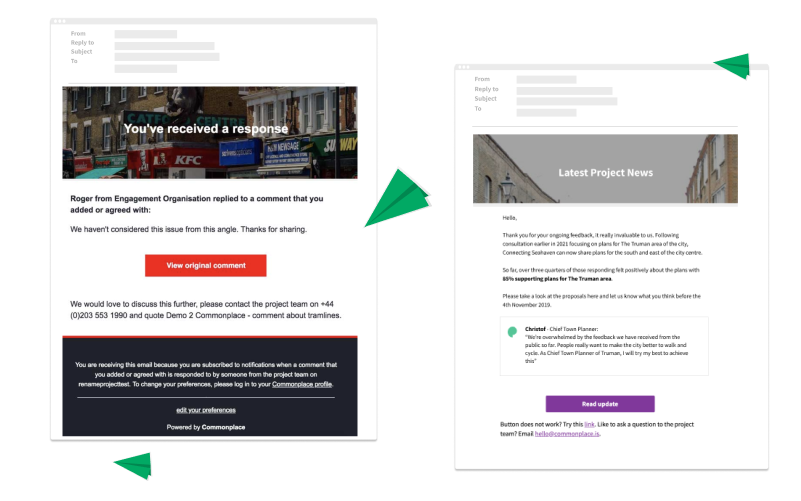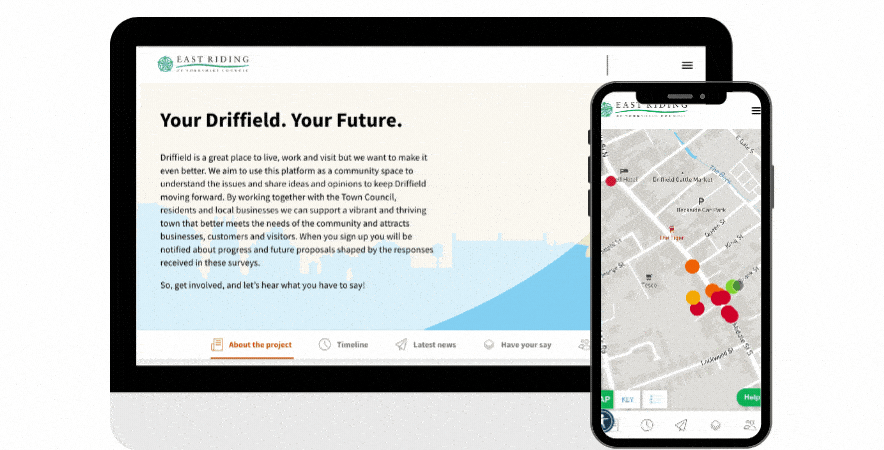Increasing community engagement is a top priority for the majority of local authorities and government agencies (if you haven't noticed from the rest of our blog already!). However, more traditional means of community engagement only reach a limited group of citizens – let's face it, in today's hectic lifestyle, public meetings just aren't a priority for most people. Plus, with the pandemic drastically shaping the very fabric of how we communicate daily, the internet cannot be ignored as a way of speaking to and connecting with people.
Find the right digital engagement strategy for you with a free demo! Our expert team is always happy to help.
More local authorities are now placing planning material online, offering citizens the option of completing digital questionnaires and trying to engage people through social media. But, simply making your planning material available as a PDF doesn't solve the problem: people aren't going to download and read an arduous planning document simply because it's there. It's about getting people interested and explaining how they can make a difference in the areas they live work and play.
In recent years, many local government agencies have turned to online community engagement platforms to encourage public participation. Whether led by a community engagement officer or not, these online community engagement tools present planning information in a way that is easy for citizens to understand and comment on. And while digital tools aren't a replacement for traditional engagement methods, they are a valuable addition to the public participation process, providing a number of key benefits for communities and local authorities.
By now you might be wondering about the tangible benefits of engaging a community online. Fret not. Let's take a look at the top 5 results of using an online community platform to increase community engagement all around…
1. Increase online community engagement to reach a broader audience
Typically you only hear from a handful of people at a public meeting: the 'professional citizens' or public interest bodies, who don't always represent the opinion of the majority. For those residents who lack the time, who don't live nearby meeting venues, or lack the inclination to contribute to the face-to-face engagement process, online engagement offers a much easier way to participate. Information is available to read or download 24/7 and comments can be left anytime and (almost) anywhere. With a mobile-first platform, this is even easier with citizens able to leave comments on the go. In fact, last year alone almost 50% of Commonplace project web page views were on mobile- an increase of 12.6% since 2019.
2. More accessible information

Traditionally online public participation has involved uploading a PDF to a website and inviting public participation in the form of an online questionnaire. For citizens, who lack the time to participate in a public consultation process digesting a planning document can be a herculean task. However, online platforms offer a medium to present planning data in a more digestible format, offering residents the option to consume essential background information and delve into varying levels of detail based on their interests. Visual tools such as before/after sliders; videos, and three-dimensional models can make plans far more digestible than technical drawings.
There are many different types of community engagement tools and strategies that can help present your plans, ideas and documents in a more digestible format. Here are some key elements to make engagement more consistent and trusted:
- Community engagement blogs or news updates: Using a newsfeed or blog, you can share status updates and project milestones with your community. It allows you to keep everyone engaged throughout the project to help build trust and transparency with local people.
- Online community engagement activities: This can include a number of things: Virtual public forums, webinars, time set aside for live social media Q&As- these all bring the community directly to you so they can have their questions answered face to (digital) face. Pair this with in-person meetings to cover as much of the community as possible. After all, digital-first never has to mean digital-only.
- Newsletter updates: Whether you have an existing email list or want to start one, you can diminish the disconnect between citizen and planning updates by sending news alerts straight to their inboxes.
- Project timeline: Having each stage of your plan visible with clear date markers not only highlights the scale of your project but what progress is currently being made towards your goal.
These can also encourage user-generated content; citizens feel informed and confident enough to leave their own comments and ideas that can then be incorporated into your overall plan.
3. Inviting a larger range of perspectives

Online participation is a welcome opportunity for community members who may be wary of public meetings. It offers a platform for broader, more moderate views than those normally seen at traditional planning meetings attended primarily by passionate activists. Instead of standing up at a town hall and commenting, citizens have the ability to submit comments or place a pin directly on a map in the comfort of their own homes without the fear of judgment.
Find out more about current public views of the planning process in our free Ebook: Engaging for the Future.
4. Producing hard data
Online engagement platforms make public participation visible and transparent to everyone, encouraging input from thousands of people. In the traditional public participation process, capturing and analysing data can be an administrative nightmare. Local authorities have to capture data manually, make sense of thousands of comments, and interpret their findings. With online tools, data is collected throughout the process and immediately available for analysis; turning softer issues into more quantifiable data.
Gathering basic demographic data in real-time makes it possible to quickly see where there are gaps in online engagement. These can be addressed by targeted localised advertising of the Commonplace website or accurate direction of “boots on the ground” - pop-up points and street interviews to capture under-represented areas or groups. This makes the overall use of resources more efficient and effective.
5. Setting the stage for ongoing public participation
Online community engagement platforms have also paved the way for continuous placemaking, helping local authorities to capitalise on the community's opinion and inspiration. The result? The creation of quality public developments that contribute to people's health, happiness, and well-being. Over time, an online repository of all public participation grows. This data can be drawn on in future projects, helping local authorities develop an engaged and informed community, ready to take part in upcoming planning decisions.
Strong online community engagement is key to the success of any planning project. Whether it's gathering the views of existing social housing tenants to create a smoother post-occupancy process or documenting the views of as much of the local community when putting together a local plan, our expert team is here to help you craft the perfect strategy. Just book a free consultation below and we'll get back to you ASAP.
.png)


